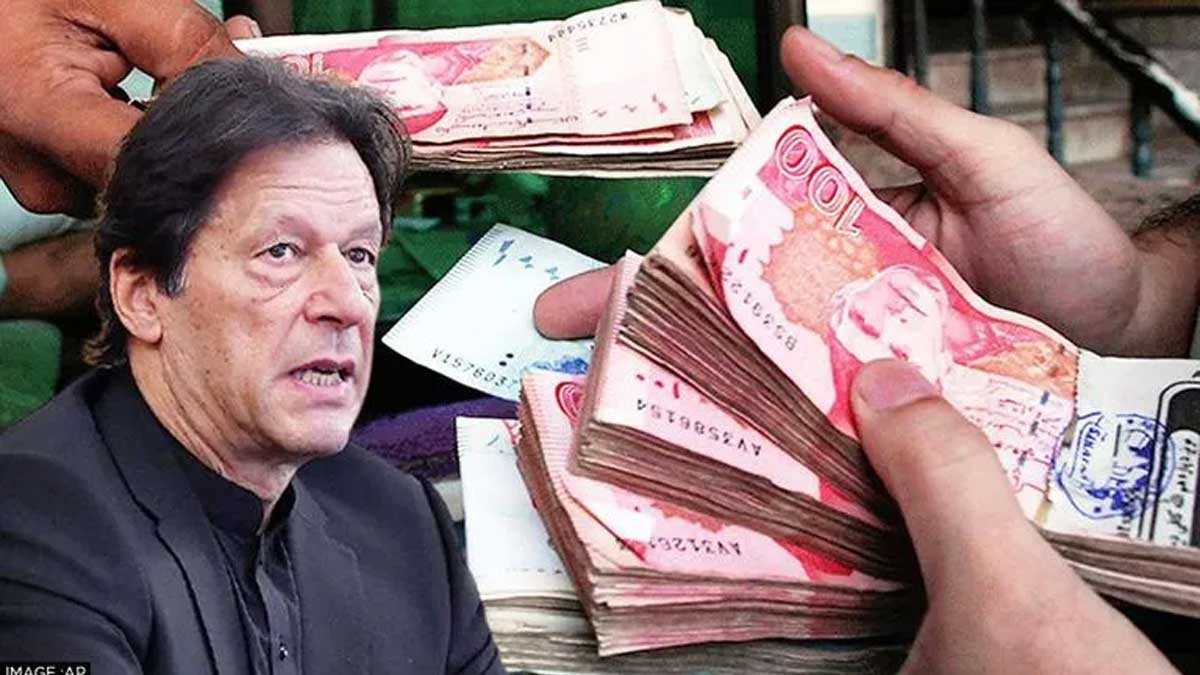With current account deficits and a short foreign exchange reserve, the ousted PTI government borrowed $15.4 billion in foreign loans in the first nine months of this fiscal year (July-March), which is 70 percent more than it got in the same period last year.
The Ministry of Economic Affairs noted in its monthly report on Foreign Economic Assistance that it received roughly $12.77 billion in foreign assistance in the first nine months of the current fiscal year (July-March), over 72 percent more than it collected in the same period last year.
According to the Ministry of Economic Affairs’ (MEA) monthly report on foreign inflows, the government exceeded over 89 percent of the fiscal year’s foreign assistance objective.
Meanwhile, it does not include the $1.6 billion in foreign debt held in Naya Pakistan Certificates by overseas Pakistanis that the MEA does not mention. This does not include the more than $1 billion in IMF loans that were disbursed in February; the State Bank of Pakistan reports both of these loans separately.
Now, the total foreign debt from external sources has risen to $49.295 billion in the first 45 months of the PTI government. When slightly more than $3 billion in IMF funding and $1.4 billion in emergency loans are added in 45 months, the total foreign loans rise to $54.767 billion.
According to MEA data, the size of foreign loans has consistently increased over the last three and a half years, rising from $10.59 billion in 2018-19 to $10.662 billion in 2019-20. $14.28 billion in 2020-21, and $12.77 billion in the first nine months.
Read more: External debt and liabilities rose to $128.92 billion by end-March
This demonstrated the government’s dependence on foreign borrowing to pay the growing current account deficit and preserve the foreign exchange reserves required to finance higher imports and earlier borrowing.
The annual budget objective for foreign debt in the federal budget 2021-22 was set at $14.088 billion, and the government borrowed $12.77 billion in the first nine months, demonstrating this. In total, the PTI government borrowed $14.3 billion in 2020-21.
There were four major sources of foreign inflows: $3.95 billion from multilateral lenders, $3 billion from Saudi Arabia in time deposits, $2.623 billion in commercial loans from private banks, and $2.041 billion in international bonds.
According to the report, the government received $8.88 billion in financial support, including $1.2 billion in short-term loans. This brought overall non-productive (non-project) aid to $10.114 billion in nine months, against a full-year target of $12.16 billion, implying that oil imports, budget finance, and foreign exchange reserve accounted for more than 80% of total loans.
About $1.82 billion in foreign-funded projects and $832 million in publicly guaranteed loans were secured.
According to the data, the PTI government raised $2.04 billion through international bonds, compared to a full-year budget target of $3.5 billion.
In addition, the government received $2.623 billion in commercial loans from international banks, against a $4.87 billion budget target. Dubai Bank was identified as the preferred financier, having provided more than $1.14 billion in short-term loans out of a total of $2.6 billion.





















